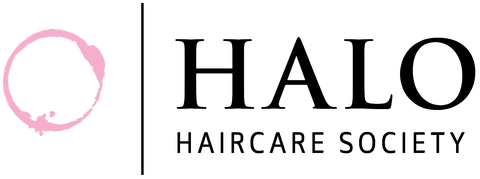Promote Growth and Healing While Preventing Triggers
Combined Approach to Scalp and Hair Health
For anyone dealing with hair loss or scalp concerns, the journey to healthier hair is about more than just one type of treatment. The best results come from a combined approach: promoting growth and healing externally while preventing internal triggers that might be contributing to the issue. By working on both sides—addressing internal factors that can cause hair and scalp issues and using external applications that promote healing and growth—you can achieve long-lasting, visible improvements.
In this blog, we’ll dive into why both prevention and promotion are essential and how to incorporate them effectively for different types of hair loss and scalp conditions, including genetic, inflammatory, and nutritional factors.
Understanding Prevention and Promotion: How They Work Together
When we talk about prevention, we’re addressing the internal factors that contribute to hair loss and scalp issues. This might involve dietary changes, hormone regulation, or managing inflammation in the body. Promotion, on the other hand, focuses on external care to directly support the scalp and hair follicles. This means using targeted topical treatments that encourage growth, nourish the skin barrier, and help restore a healthy scalp environment.
Here’s why they’re both crucial: prevention helps stop the triggers that lead to scalp problems and hair loss, while promotion enhances the scalp’s ability to grow and maintain healthy hair. Using both together ensures that you’re not only preventing further issues but actively working to restore and strengthen your hair and scalp.
Addressing Genetic, Inflammatory, and Nutritional Factors
Different factors can lead to hair loss and scalp issues, and each requires a tailored combination of prevention and promotion.
-
Genetic Factors
Genetic hair loss, such as androgenetic alopecia, is often driven by DHT, a hormone that shrinks hair follicles. Here’s how to work on both prevention and promotion for genetic factors:- Prevent Internally: Use DHT blockers, either through medication or natural alternatives like saw palmetto, to reduce the impact of DHT on hair follicles.
- Promote Externally: Focus on enhancing blood flow to the scalp with plant-based vasodilators like rosemary oil or peppermint oil, which stimulate the follicles. Adding Low-Level Laser Therapy (LLLT) can further promote growth by increasing circulation and helping follicles stay in the growth phase longer.
-
Inflammatory Factors
Inflammatory scalp conditions, such as psoriasis, seborrheic dermatitis, or eczema, can cause itching, redness, and flaking, often leading to hair loss if left unmanaged.- Prevent Internally: Work on reducing systemic inflammation by avoiding inflammatory foods (like refined sugars and processed foods) and incorporating anti-inflammatory foods (like omega-3-rich fish, leafy greens, and berries). For some, supporting gut health with probiotics may also help lower overall inflammation.
- Promote Externally: Applying topical treatments to help repair the skin barrier, reducing redness and irritation. Products from our Rescued By contain active ingredients to help soothe and are anti-inflammatory to heal scalp complaints, LLLT can calm the scalp while promoting healing and growth.
-
Nutritional Factors
Nutritional deficiencies can weaken hair and disrupt scalp health. Iron, vitamin D, protein, and omega-3s are common deficiencies that can lead to hair thinning or scalp issues. If you want to know more about Nutritional factors, checkout our blog on the Hair Edit Nutrition From Within- Prevent Internally: Identify and correct any deficiencies through dietary adjustments. For example, if iron levels are low, incorporate iron-rich foods (like spinach and lean meats) into your diet, and make sure to eat with foods rich in vitamin c to promote absorption. Ensuring adequate protein and omega-3 intake also supports overall scalp health.
- Promote Externally: Use nutrient-dense scalp treatments that help deliver key ingredients directly to the follicles. Topical applications with vitamins E and B5, along with plant-based vasodilators like caffeine, can help improve nutrient delivery to the scalp. Combined with LLLT, these treatments create an ideal environment for hair growth by enhancing circulation and supporting healthy follicle function.
Key External Methods for Promoting Growth and Healing
External treatments are the backbone of the promoting aspect, providing direct support to the scalp and follicles. Here are some of the most effective methods for promoting growth and healing:
-
Topical Vasodilators
Ingredients like rosemary oil, peppermint oil, and caffeine improve blood flow to the scalp, allowing more nutrients to reach the hair follicles. Regular scalp massages with these oils can improve circulation and create a supportive environment for growth. -
Barrier-Repairing Ingredients
Inflammatory conditions benefit greatly from barrier-repairing ingredients that help soothe the scalp, reduce irritation and strengthen the scalp’s protective barrier, reducing dryness and flaking. -
Low-Level Laser Therapy (LLLT)
LLLT offers a non-invasive way to stimulate hair follicles, improve blood flow, and support scalp health. Using specific wavelengths of light, LLLT can prolong the growth phase of hair follicles, boost cellular function, and reduce inflammation, making it a versatile tool for genetic, inflammatory, and nutritional hair loss. -
Scalp-Friendly Masks and Serums
Products with hydrating and nutrient-rich ingredients, help to nourish the scalp, making it a healthy environment for hair growth. Using a hydrating mask once a week can help with moisture retention and soothe any dryness or sensitivity.
If you need help finding the best routine for you, or support on addressing the internal trigger contact us for a compressive curated routine or head to the Hair Edit to learn more.
Bringing It All Together
For lasting improvements, the best approach is to combine internal prevention and external promotion. Addressing internal triggers—like hormones, inflammation, or nutrient deficiencies—removes the underlying causes, while using topical treatments to promote healing and growth gives your scalp and hair the immediate support they need.




